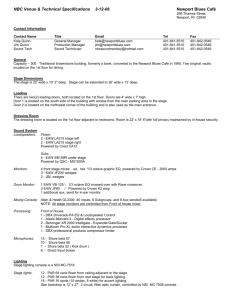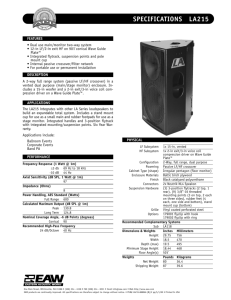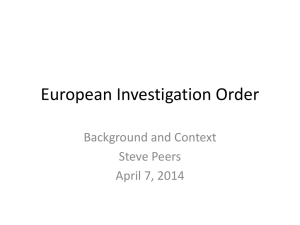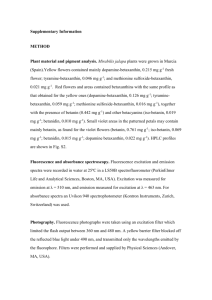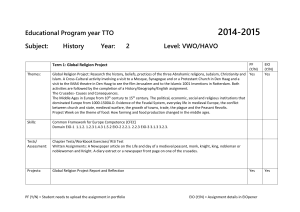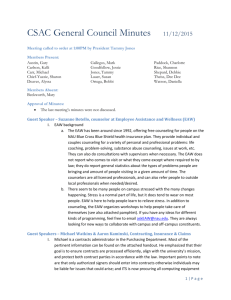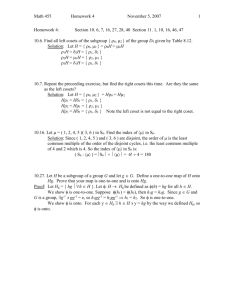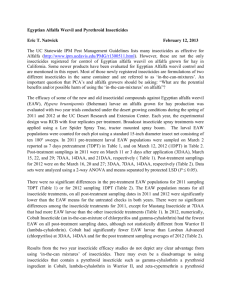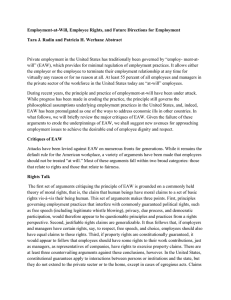The EIO: the end of MLA as we know it?
advertisement
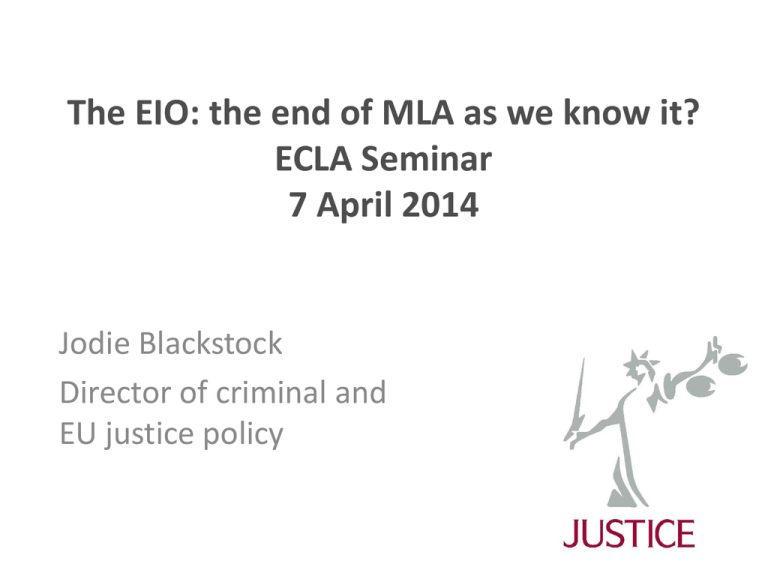
The EIO: the end of MLA as we know it? ECLA Seminar 7 April 2014 Jodie Blackstock Director of criminal and EU justice policy The EIO from a procedural rights perspective • Does the EIO demonstrate an evolution in rights protection? • Can it solve (some of) the problems with the European arrest warrant (EAW)? European Investigation Order – a directive • Replacement of substantial body of MLA agreements • Complex and detailed instrument • Four years in the making • European Parliament co-decision Does the EIO demonstrate an evolution in rights protection? • • • • Language of rights – post Lisbon measure Role for procedural safeguards Grounds of refusal Legal remedies Language of Rights • Recital 12: IA should pay particular attention to ensuring rights pursuant to article 48 CFR. Presumption of innocence and rights of defence are a cornerstone of FR. Any limitation must be in accordance with article 52 CR: necessary, proportionate, legitimate objectives • Recital 18: standard para. on non-modification of rights BUT operative provision in text Role for procedural safeguards • • • • • • • Article 2(c)(ii) – validation by judicial authority Article 6 – conditions for issuing and transmissionIS may only issue where: (a) necessary and proportionate taking into account rights of suspected or accused person (b) the measure could have been ordered in the IS Article 10(3) – ES recourse to a different measure if same result can be achieved through less intrusive means Article 11(4) – consultation about grounds for refusal Article 13(2) - suspension of transfer of evidence pending a decision on a legal remedy Article 14(3) - shall ensure information is provided about mechanisms to seek legal remedies, where it would not undermine confidentiality of investigation Article 20 – Protection of personal data Grounds for non-recognition/ execution • Article 11 – ES may refuse where: (a) Immunity or privilege (b) National security or intelligence activities (c) For ‘administrative’ offences in the ES the measure could not be applied (d) Ne bis in idem (e) Terrritoriality (f) Incompatible with article 6 TEU and CFR (g) Double criminality (h) Measure is restricted to category excluding this offence (unless article 10(2) applies) Legal Remedies • Article 14 (1) MS must ensure remedies equivalent to available in a domestic case are available (2) substantive reasons can only be challenged in IS (subject to guarantees of fundamental rights available in ES) (6) Shall not suspend execution, unless would do so domestically (7) IS shall take into account a successful challenge. Shall ensure the rights of the defence and fairness of proceedings are respected when assessing evidence • How will this operate in practice? Will it be effective? • Is it to invoke a ground of refusal or something else? • NB – there is otherwise no right to a hearing specified Can the EIO solve (some of) the problems with the EAW? • Proportionality • Issue prior to ‘criminal prosecution’ • Detention pre-trial for lengthy periods and in poor conditions EAWS: ensuring an effective defence (2012) • 72 cases between 19 MS • 25% raised a HR issue • 10% refused, almost all on technical grounds (non for HR reasons) • 28% withdrawn • 51% involved lawyer in IS • 30% related to acts prior to 2005 (range of seriousness) • No proportionality check • Resort to EAW prior to proper search for suspect – MLA measures ineffective • Lengthy PTD but in many cases, short sentences • Major upheaval to ES life • Where ES refuses surrender, the person is trapped • Some/all parts where RP cannot obtain legal assistance • Substantial no. of lawyers insufficiently experienced to act in EAW cases • Significant problems with interpretation and translation European Parliament Resolution on EAW • Agreed 27 February 2014. Makes recommendations to the Commission for all MR measures: • Validation by IS judge • A proportionality check • A consultation procedure • Refusal where incompatible with human rights • Effective legal remedy EIO directive includes these measures to regulate its own operation Reduced need for EAW? • Access to investigative measures to progress police investigation prior to charge • Article 22 – Temporary transfer with consent of a person held in custody in order to gather evidence • Article 24 - Hearing by audio-visual transmission with consent of experts, witnesses and suspects • Article 25 – Hearing by telephone? Framework for less intrusive means to investigate cross border crime Effective defence rights? • Potential for significant volume of requests (approx. 15,000 EAWs issued in 2011) • Roadmap for strengthening procedural rights of suspects and accused persons in criminal proceedings • Only applies to domestic and EAW cases • Will it be possible to effectively defend against EIOs w/o a built in hearing and w/o roadmap rights?
